ANIMATIONS ANGIOPLASTY - CATHETER - STENT - BALLOON |
ANGIOPLASTY - CATHETER |
click on picture(s) to see the Flash movie(s) |
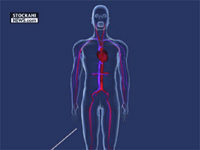
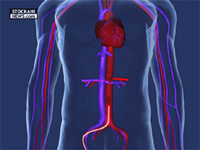
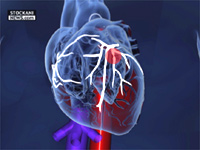
ANGIOPLASTY - STENT |
click on picture(s) to see the Flash movie(s) |
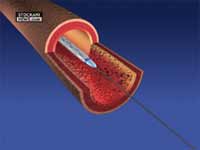
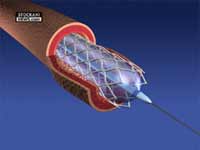
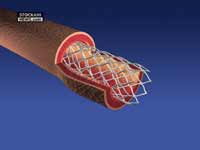
ANGIOPLASTY - BALLOON |
click on picture(s) to see the Flash movie(s) |
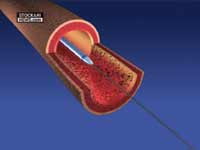
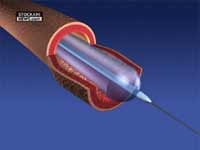
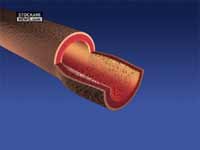
click on picture(s) to see the Flash movie(s)
|
animation(s) available on request on our ftp as 768x576 pixels QuickTime movie(s) or as numbered jpg files ready to be imported in an editing software such as Avid, Final Cut, After Effects, Combustion or others. |
pricing : 3D News Graphics animations |
| From Wikipedia, the free encyclopedia Coronary angioplasty One way to unblock (open up the lumen) a coronary artery (or other blood vessel) is percutaneous transluminal coronary angioplasty (PTCA), which was first performed in 1977 by Andreas Gruentzig. A wire is passed from the femoral artery in the leg (most commonly) or the radial artery in the arm up to the diseased coronary artery, to beyond the area of the coronary artery that is being worked upon. Over this wire, a balloon catheter is passed into the segment that is to be opened up. The end of the catheter contains a small folded balloon. When the balloon is hydraulically inflated, it compresses the atheromatous plaque and stretches the artery wall to expand. At the same time, if an expandable wire mesh tube (stent) was on the balloon, then the stent will be implanted (left behind) to support the new stretched open position of the artery from the inside. Angioplasty and stenting is performed through a thin flexible catheter during Cardiac Catheterization with just a local anaesthetic to the groin (or wrist) where the catheter was inserted, often making heart surgery unnecessary. While coronary angioplasty has consistently been shown to reduce symptoms due to coronary artery disease and to reduce cardiac ischemia, it has not been shown in large trials to reduce mortality due to coronary artery disease, except in patients being treated for a heart attack acutely (also called primary angioplasty). There is a small but definite mortality benefit (ie., reduction) with this form of treatment compared with medical therapy, usually consisting of thrombolytic ("clot busting") medication. |